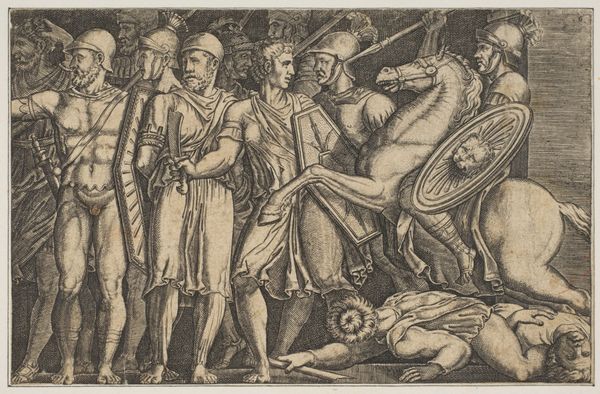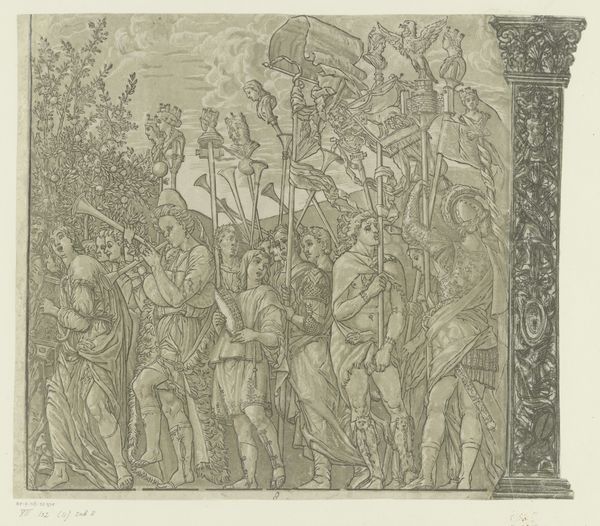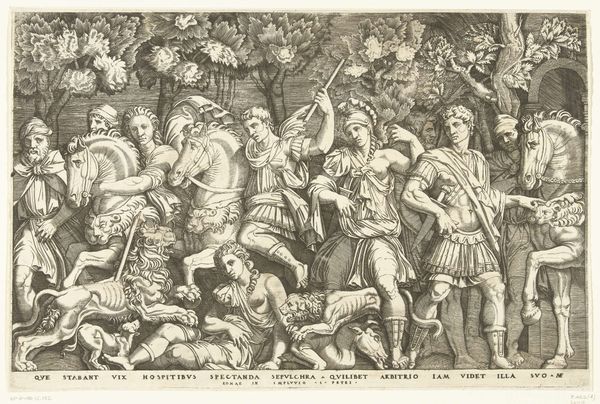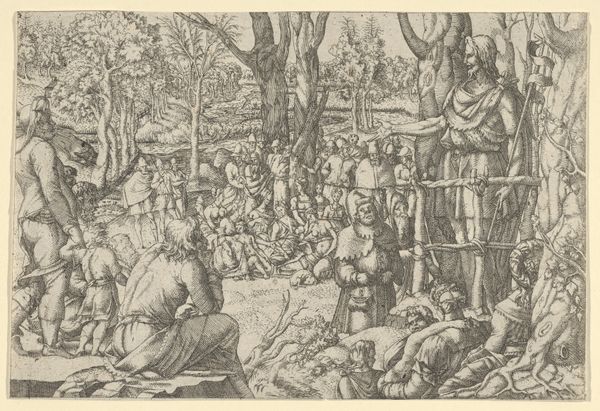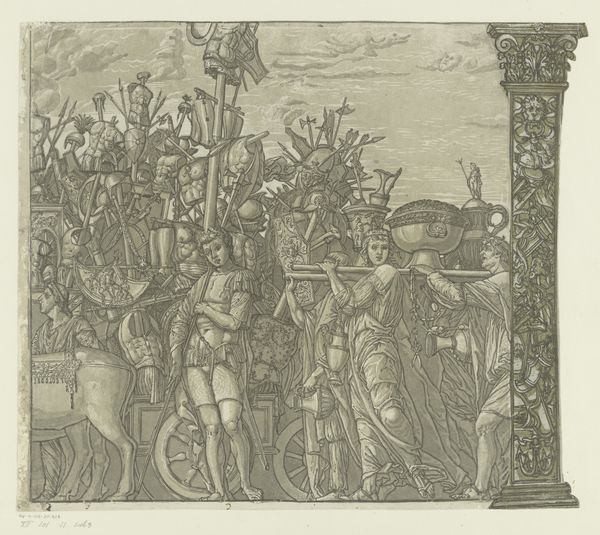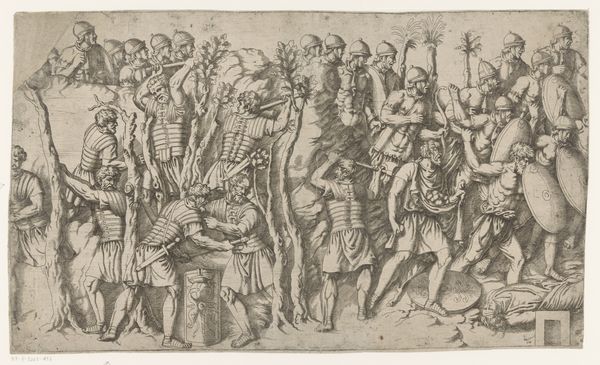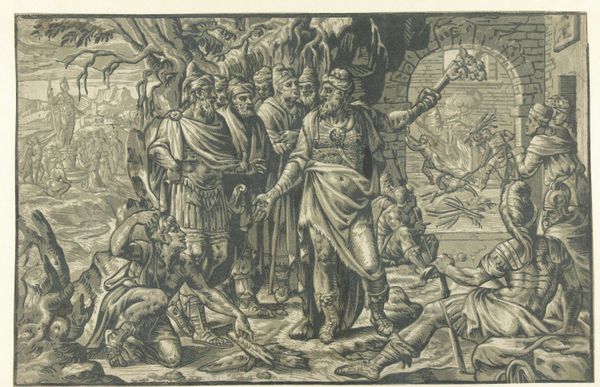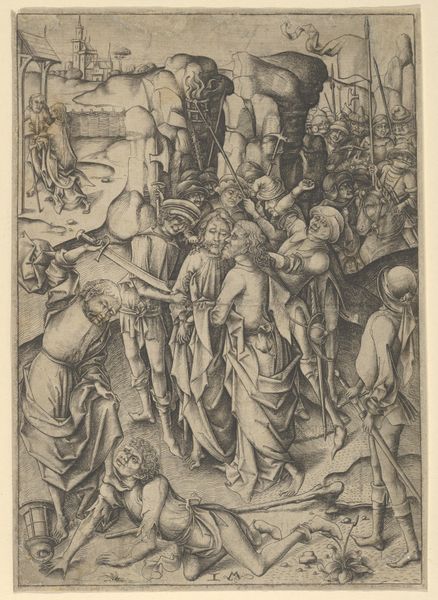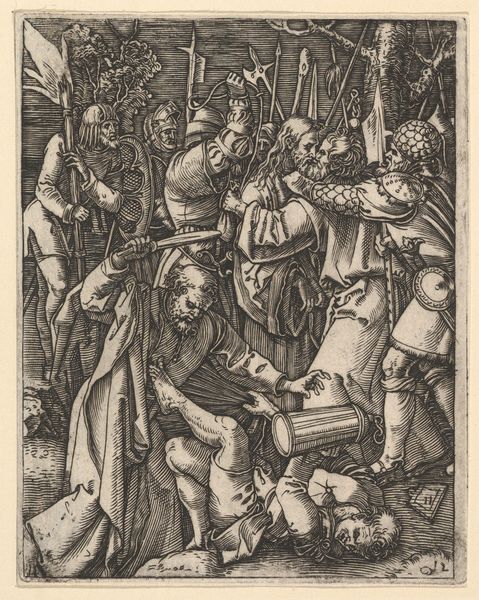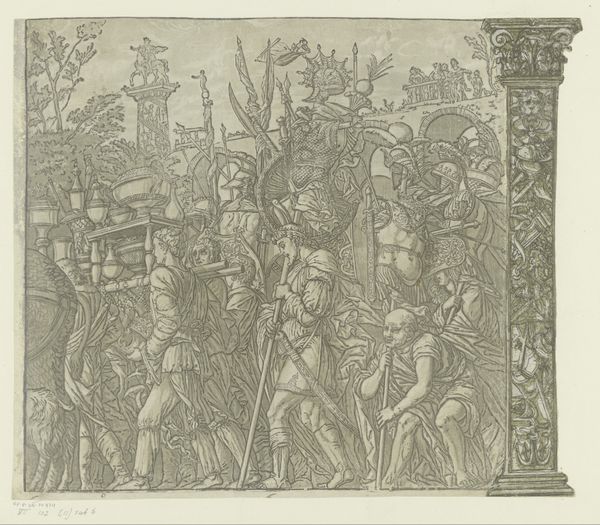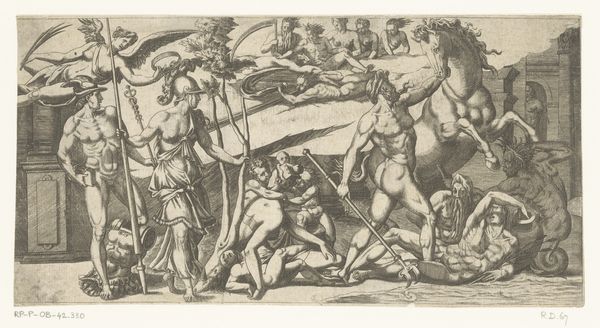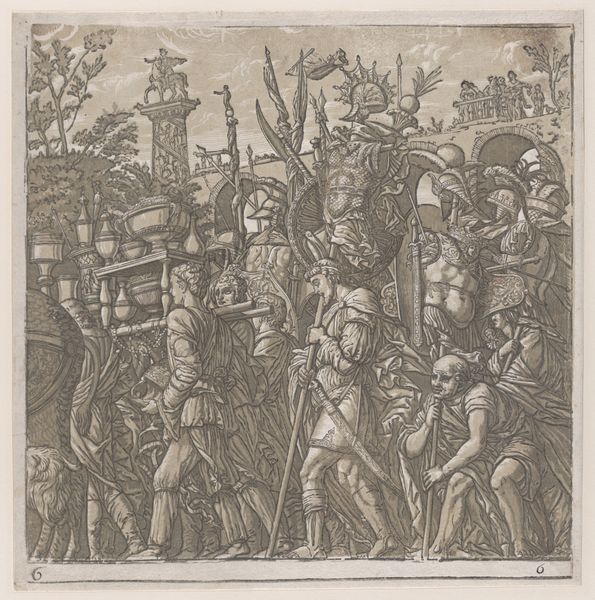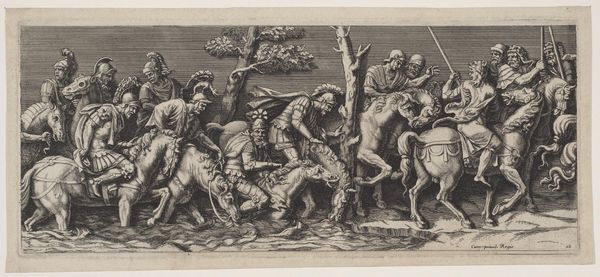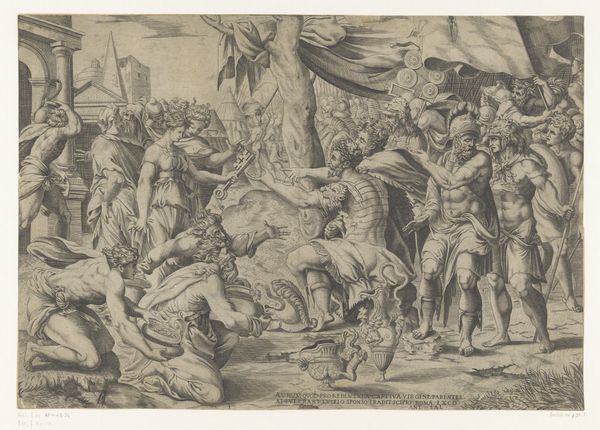
print, engraving
#
portrait
# print
#
pen illustration
#
pen sketch
#
mannerism
#
figuration
#
11_renaissance
#
line
#
history-painting
#
engraving
Dimensions: height 85 mm, width 132 mm
Copyright: Rijks Museum: Open Domain
Curator: Here we have "Trajanus tussen de stad Rome en Victoria" by Etienne Delaune, dating back to somewhere between 1528 and 1583. It’s currently held in the Rijksmuseum, and it’s an engraving on paper. Editor: Wow, my first impression is that it's intensely energetic! Like a freeze-frame of a victory parade that’s also, strangely, a scene of carnage. So many bodies in motion, even the ones on the ground. Curator: Precisely. Delaune, a prominent figure in the French Mannerist movement, was known for these densely populated scenes that served political purposes. The image constructs an idealized vision of Roman imperial power, with Trajan, a celebrated emperor, at its center. Editor: It’s amazing how he manages to pack so much detail into a relatively small print. All those tiny, meticulously rendered lines, creating texture and depth. The whole thing feels... ambitious. Is this supposed to glorify violence or showcase victory? The mix feels uneasy. Curator: Well, power and violence were inseparable in the Roman imagination, and, by extension, in the imaginations of Renaissance rulers keen to emulate them. Prints like these served as propaganda, circulating idealized visions of leadership and military prowess, often at the expense of historical accuracy or sensitivity. Editor: Propaganda...yes, it does feel very 'state-approved.' There’s an air of manufactured glory here that mutes any true sense of the human cost depicted here, underfoot even! Do you think contemporary viewers saw through this glorification? Curator: Some certainly did. It’s worth remembering that images like these were consumed in various ways, sometimes critically, sometimes with reverence, and often with a mixture of both. But, unquestionably, such visual rhetoric helped to normalize and perpetuate power structures. Editor: So even something seemingly simple as an engraving, mass-produced and circulated, had this latent power to shape perceptions, subtly dictating the terms of leadership. Now I feel the weight of this 'celebration' in a whole different way! Curator: Absolutely. And understanding that visual history, its deliberate construction and deployment, gives us a richer perspective on our own cultural moment. Editor: Right, and I suppose grappling with that history allows us to critically evaluate these narratives instead of accepting them outright. Curator: A perfect takeaway. Now shall we explore a rather less turbulent canvas?
Comments
No comments
Be the first to comment and join the conversation on the ultimate creative platform.
